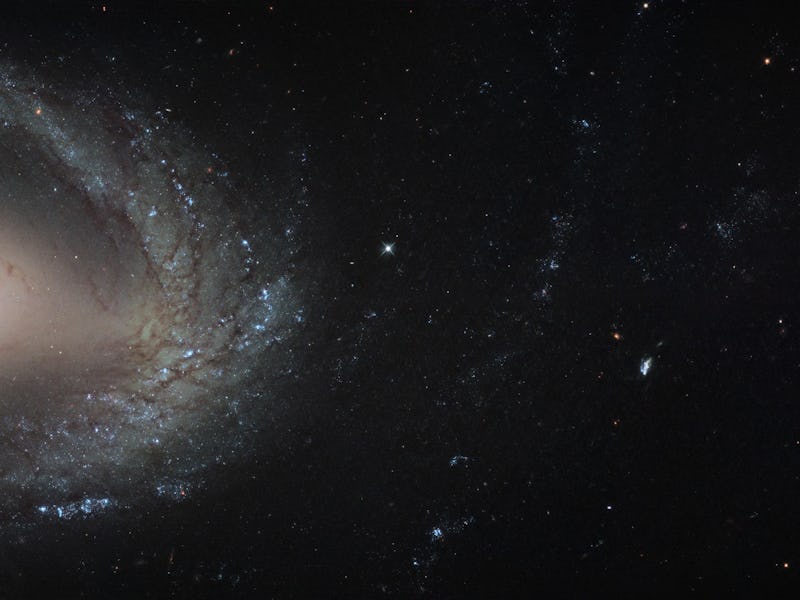Space might be gigantic — it is — but that doesn’t mean there’s room for everything. NASA and ESA astronomers using the Hubble Space Telescope are watching a pair of galaxies not too far from our Milky Way locked on a collision course with each other, and it’s unfolding like a classic David and Goliath tale — albeit one that’s taking over 400 million years to conclude.
Let’s break down this cosmic boxing match. In the left corner we have the heavy favorite, NGC 1512, a huge barred spiral galaxy full of stars, planets, and cosmic dust. In the right corner is the challenger NGC 1510. It’s a dwarf galaxy that shines brightly, but hasn’t exactly got much in terms of girth and expanded presence.
Despite the extreme size differences, NGC 1510 still exerts significant gravitational force on NGC 1512, as well as vice versa. And over the 15 rounds of their millions-year bout, the two are slowly reshaping each other’s structures with gravity’s pummeling blows. NGC 1512, in particular, has suffered hits which have caused the galaxy to develop a kind of cosmic funnel in which raw star formation materials are getting pipelined into the heart of the galaxy, intensifying star birth and creating an ebullient brightness in the inner starburst ring.
The bigger galaxy also has tendril-like arms protruding from the side and creeping towards NGC 1510. The smaller galaxy’s gravitational interactions have been enough to warp NGC 1512’s cosmic tentacles, but that tidal tug of war has caused NGC 1510’s own star formation to react more intensely — which means the smaller galaxy is also something of a bright blue lamp in a pitch-black forest.
It’s tough to say who’s winning, but based solely on the fact that the dwarf galaxy has managed to stay tough and weather out the blows coming from the barred spiral, you could probably persuade you to bet good money NGC 1510 will find a way to outlast this match. In a very literal sense, it hasn’t spread itself as thin as its bigger competitor.
The tale of this galactic pair is a good reminder to never count out the small players — especially when they’re made up of a devastating mix of astrophysical energy.
